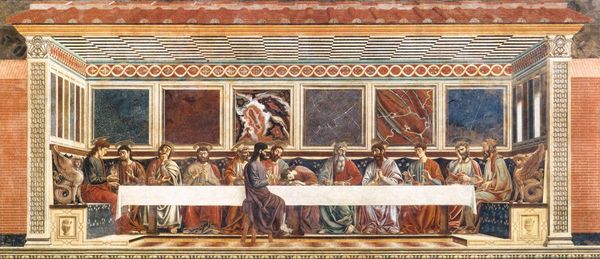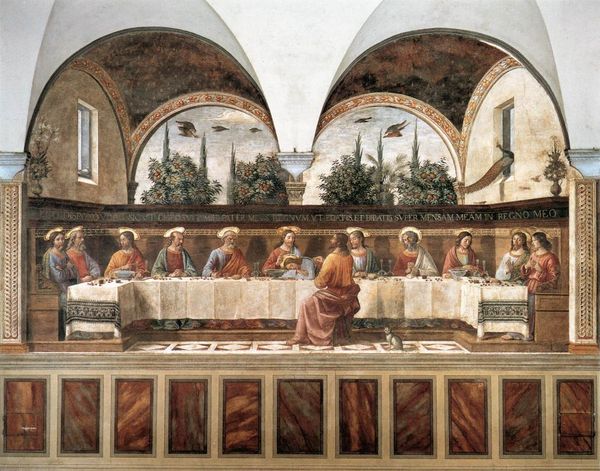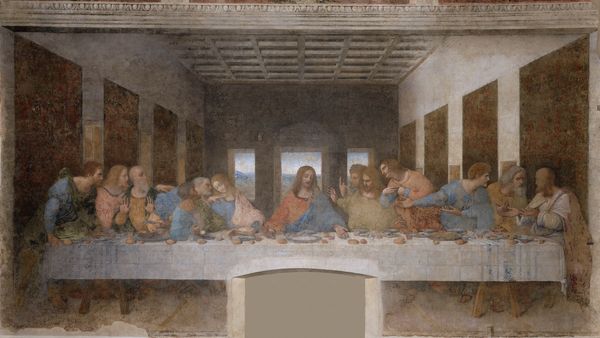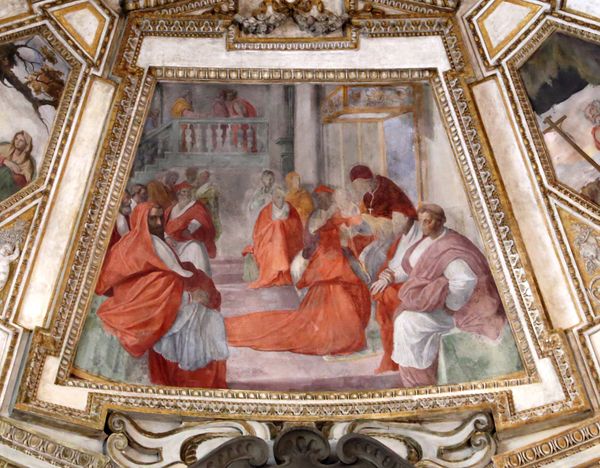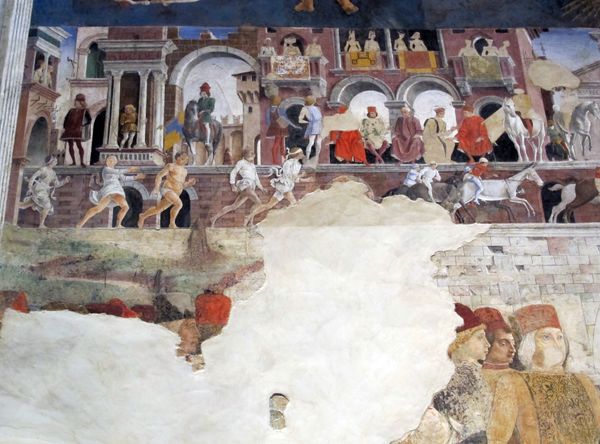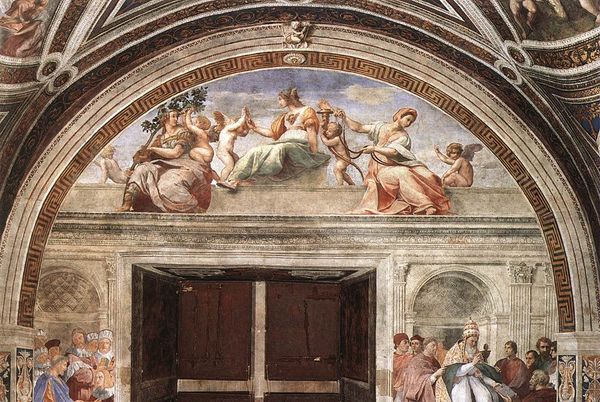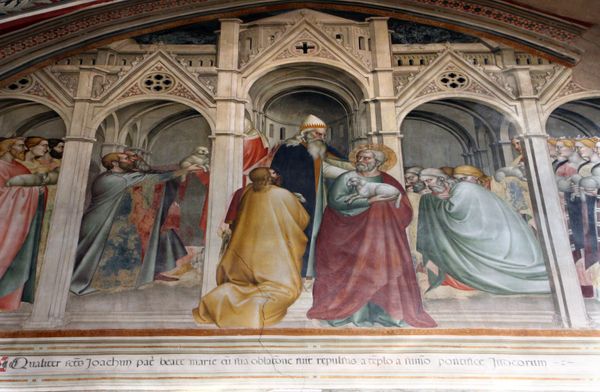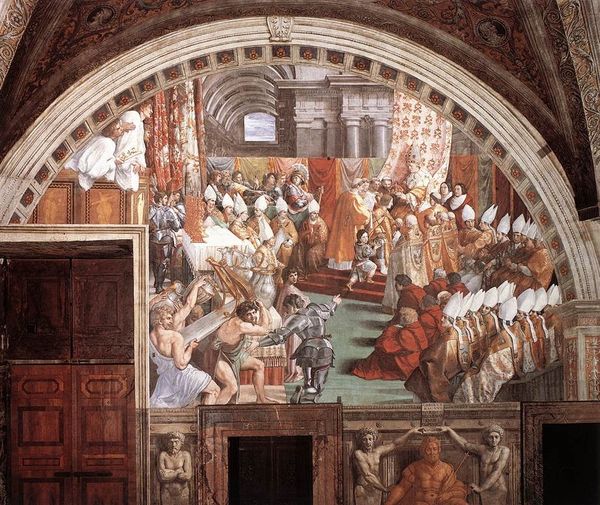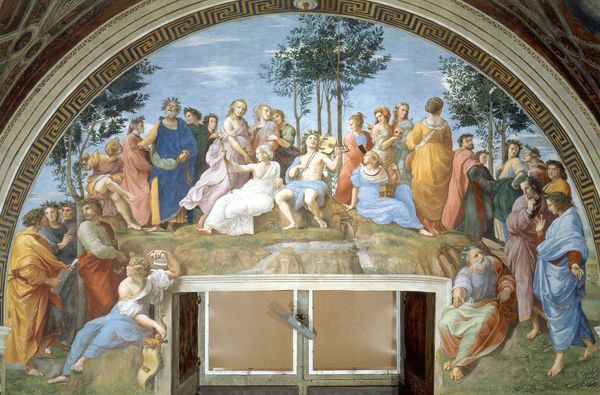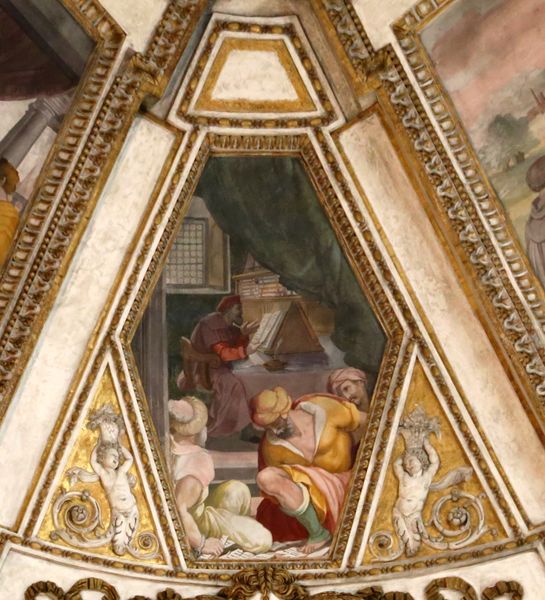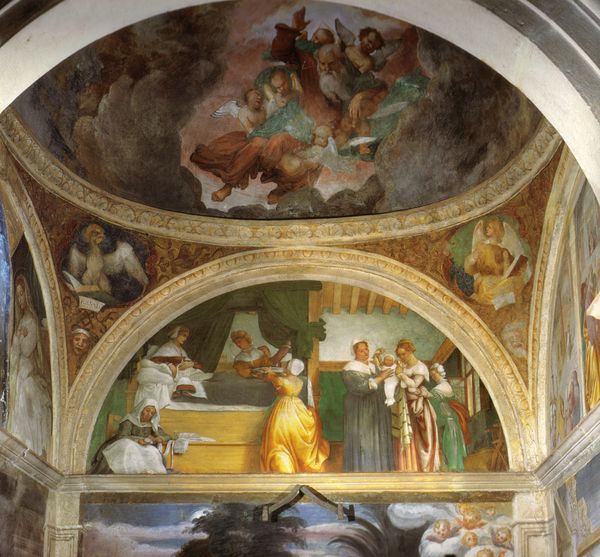
painting, fresco
#
portrait
#
painting
#
sculpture
#
mannerism
#
historic architecture
#
fresco
#
traditional architecture
#
group-portraits
#
history-painting
#
historical building
Copyright: Public domain
This is Alessandro Allori's fresco, the *Last Supper*, painted on a wall at the Carmine in Florence, probably in the late 16th century. Allori gives us the famous final meal of Jesus Christ and his disciples. It’s a scene loaded with Christian symbolism and complex social dynamics – trust, betrayal, and sacrifice. The painting was made in Florence, where religious institutions like the Church played a huge role in shaping society. The Catholic Church's influence on art was enormous. They were major patrons and had strict ideas about what was appropriate. Allori's *Last Supper* fits into a long tradition of representing religious stories in art, reflecting the values and beliefs of the time. The Council of Trent urged artists to make art more clear in its meaning in order to avoid misinterpretation. It was a self-consciously conservative stance in the face of what they saw as the threat of protestantism. To really get to grips with this painting, we'd need to look at the history of religious art, the political situation in Florence at the time, and Allori's own biography. Understanding these social and institutional contexts helps us understand the painting's meaning.
Comments
No comments
Be the first to comment and join the conversation on the ultimate creative platform.

